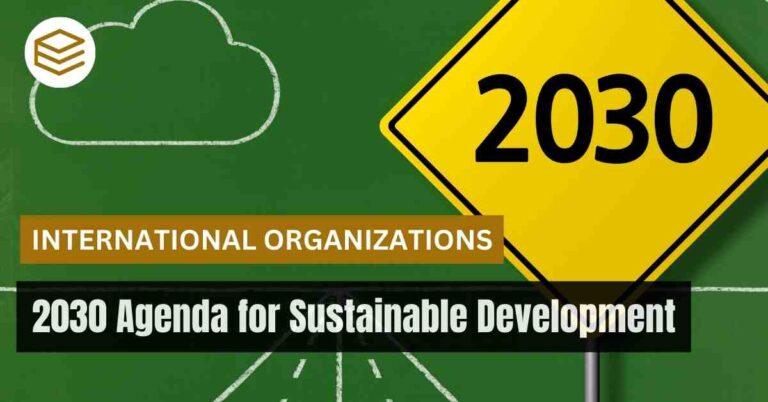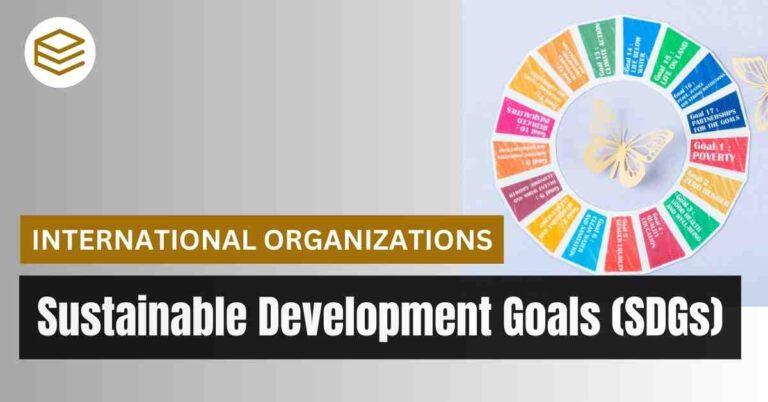October 25, 2025 5:37 pm
Introduction
Federalism in India represents the division of powers between the Centre and the States, ensuring a balance between unity and diversity. Described as “quasi-federal” by K.C. Wheare, the Indian model combines the essence of federal and unitary systems. This unique framework is critical for governance in a geographically vast and culturally diverse country like India.
For UPSC aspirants, federalism is a key topic in Prelims, Mains, and Essay Papers. Its study involves understanding constitutional provisions, challenges, evolution, and its practical implications in governance.
Federalism is a system of governance where power is constitutionally divided between different levels of government. In India, this division exists between the Union Government and the State Governments, with both deriving powers from a common source—the Indian Constitution.
Key Characteristics of Federalism
- Dual Government: India has a dual government structure—Centre and States—each functioning independently within their defined spheres.
- Written Constitution: The Constitution explicitly demarcates the powers of both levels of government.
- Supremacy of Constitution: The Constitution is the highest law of the land, ensuring uniformity.
- Independent Judiciary: The judiciary acts as the guardian of the Constitution and adjudicates disputes between the Centre and States.
1. Division of Powers
The Indian Constitution provides a clear division of powers through three lists under the Seventh Schedule:
- Union List (97 items): Subjects of national importance, such as defense, foreign affairs, and railways.
- State List (66 items): Subjects of regional importance, such as police, public health, and agriculture.
- Concurrent List (47 items): Subjects where both Centre and States can legislate, such as education, forests, and labor welfare.
2. Unequal Distribution of Powers
The Centre has greater authority than the States, making India a quasi-federal system. For example:
- During emergencies, the Centre assumes overriding powers (Articles 352, 356, and 360).
3. Integrated Judiciary
India’s judiciary, headed by the Supreme Court, is unified and resolves disputes between the Centre and States or among States.
4. Single Citizenship
Unlike other federal systems (e.g., the USA), India provides single citizenship to ensure national unity.
5. Financial Dependence
States depend on the Centre for financial resources through tax devolution and grants.
1. Legislative Relations
Articles 245-255 detail legislative powers:
- Article 245: Extent of laws made by Parliament and State Legislatures.
- Article 249: Parliament can legislate on a State subject in national interest.
- Article 250: Parliament’s power during a National Emergency.
2. Administrative Relations
Articles 256-263 govern administrative relations:
- Article 256: States must comply with the laws made by Parliament.
- Article 263: Provisions for an Inter-State Council to resolve disputes.
3. Financial Relations
Articles 268-293 address financial relations:
- Article 268: Duties levied by the Centre but collected by States.
- Article 280: Establishment of the Finance Commission for revenue distribution.
4. Emergency Provisions
Articles 352-360 empower the Centre during emergencies:
- National Emergency (Article 352): Overriding powers for the Centre.
- President’s Rule (Article 356): Direct governance by the Centre in case of State failure.
1. Cooperative Federalism
- Cooperation between the Centre and States in policy formulation and implementation.
- Example: GST Council, NITI Aayog.
2. Competitive Federalism
- States compete to attract investments and improve governance.
- Example: Rankings like Ease of Doing Business.
3. Asymmetric Federalism
- Special provisions for certain states due to their unique needs.
- Example: Article 370 for Jammu and Kashmir (now abrogated), Article 371 for other states.
1. Post-Independence Period
- The initial years were marked by strong central authority to maintain unity and stability.
- Example: Use of Article 356 during the reorganization of states.
2. Phase of Regionalism (1960s-1980s)
- Growth of regional parties led to demands for greater State autonomy.
- Example: Dravidian movement in Tamil Nadu.
3. Economic Liberalization (1991 onwards)
- Shift towards competitive federalism with economic reforms encouraging States to attract investments.
4. Contemporary Period
- Focus on cooperative federalism through bodies like NITI Aayog.
1. Over-Centralization
- Excessive use of provisions like Article 356 (President’s Rule) undermines State autonomy.
- Example: Frequent imposition of President’s Rule in the 1970s and 1980s.
2. Regional Disparities
- Unequal distribution of resources leads to socio-economic inequalities.
- Example: Southern states contributing more to GST revenue but receiving less allocation.
3. Inter-State Disputes
- Issues like water sharing and boundary disputes strain relations.
- Example: Cauvery Water Dispute between Karnataka and Tamil Nadu.
4. Fiscal Imbalance
- States rely heavily on central grants due to limited taxation powers.
5. Political Misalignment
- Conflicts arise when different parties govern the Centre and States.
- Example: Disputes over implementing central schemes.
Measures to Strengthen Federalism
1. Strengthening Institutions
- Revive the Inter-State Council for better coordination.
- Enhance the role of Zonal Councils.
2. Fiscal Reforms
- Increase devolution of funds to States as per the recommendations of the Finance Commission.
3. Resolving Disputes
- Establish fast-track mechanisms for resolving inter-State disputes.
4. Promoting Decentralization
- Empower local governments through effective implementation of the 73rd and 74th Amendments.
5. Building Consensus
- Encourage dialogue between the Centre and States on contentious issues.
Significant Landmarks in the Evolution of Indian Federalism
1. State Reorganization Act, 1956
- Based on the recommendations of the Fazal Ali Commission, the Act reorganized States based on linguistic lines.
- It strengthened federalism by addressing regional aspirations.
2. Sarkaria Commission (1983)
- The commission was constituted to examine Centre-State relations and recommend reforms.
- Key Recommendations:
- Use Article 356 (President’s Rule) sparingly.
- Strengthen the Inter-State Council for resolving disputes.
3. Punchhi Commission (2007)
- Recommended creating institutional mechanisms for effective Centre-State relations.
- Emphasized cooperative federalism to manage challenges like terrorism and climate change.
4. Abrogation of Article 370 (2019)
- Removed the special status of Jammu and Kashmir, integrating it more closely into the Union structure.
- Marked a significant shift in the concept of asymmetrical federalism.
1. GST and Fiscal Federalism
- The implementation of the Goods and Services Tax unified indirect taxation but also increased States’ reliance on central compensation.
- Delays in GST compensation payouts have strained Centre-State relations.
2. Farm Laws and Federal Tensions
- The 2020 farm laws sparked protests, with States accusing the Centre of encroaching on their legislative domain (agriculture being a State subject).
3. Disputes Over Central Schemes
- Implementation of centrally sponsored schemes often leads to friction:
- States bear a significant financial burden.
- Example: Opposition from some States to the Ayushman Bharat Scheme.
4. Water Disputes
- Persistent disputes over river water sharing highlight the challenges of inter-State relations.
- Example: The Cauvery Water Dispute between Karnataka and Tamil Nadu.
5. Governor’s Role
- The appointment and actions of Governors often become contentious:
- Allegations of bias towards the Centre.
- Example: Controversies in Maharashtra and West Bengal.
The Supreme Court has played a pivotal role in interpreting and preserving the federal structure:
- S.R. Bommai vs Union of India (1994):
- Restricted arbitrary use of Article 356.
- Upheld the principle of federalism as part of the basic structure of the Constitution.
- State of West Bengal vs Union of India (1962):
- Asserted that Indian federalism is not absolute but retains significant unitary features.
- Narmada Water Dispute Case:
- Highlighted the judiciary’s role in resolving inter-State disputes amicably.
- Centre-State GST Disputes:
- The judiciary clarified operational ambiguities under the GST framework, ensuring a balance between federal principles and national objectives.
Federalism in the International Context
Comparing Indian federalism with other countries provides valuable insights:
- USA: A true federal system where States have significant autonomy, including their constitution and citizenship.
- Canada: A model of cooperative federalism, where provinces have autonomy but coordinate closely with the federal government.
- Australia: Similar to India, it has a strong central government, but States retain significant powers.
1. Strengthening Decentralization
- Effective implementation of the 73rd and 74th Constitutional Amendments will enhance grassroots governance.
- Empowering local governments can reduce dependency on higher tiers of government.
2. Reforming Fiscal Relations
- Rationalize centrally sponsored schemes to ensure better financial autonomy for States.
- Strengthen the GST framework by ensuring timely compensation payments.
3. Technology for Federalism
- Use digital platforms for real-time coordination between the Centre and States.
- Example: Digital dashboards for tracking centrally sponsored schemes.
4. Building Consensus
- Enhance the role of forums like the Inter-State Council for dispute resolution.
- Promote dialogue between political parties to address federal issues amicably.
Case Studies Related to Federalism
1. GST Council: A Model of Cooperative Federalism
- The GST Council ensures collaboration between the Centre and States on tax policies.
2. COVID-19 Management
- Highlights the importance of cooperative federalism in handling crises.
3. River Water Disputes
- Example: Cauvery Water Management Authority for resolving inter-State disputes.
1. Prelims
- Focus on Articles, constitutional provisions, and federal institutions.
- Example Question:
Which article provides for the establishment of an Inter-State Council?- Answer: Article 263.
2. Mains
- Analytical questions on challenges and evolution of federalism.
- Example:
Discuss the significance of cooperative and competitive federalism in India.
3. Essay
- Topics like “Federalism in India: Challenges and Opportunities”.
4. Interview
- Questions on inter-State disputes, fiscal federalism, and decentralization.
Sample Practice Questions
Prelims
Which of the following is NOT a feature of Indian federalism?
- Single citizenship.
- Independent judiciary.
- Unequal distribution of powers.
Answer: None. (All are features.)
Mains
“Examine the role of NITI Aayog in promoting cooperative federalism. How does it differ from the Planning Commission?”
Conclusion
Indian federalism is a dynamic system that has evolved to balance unity with regional diversity. Despite challenges like fiscal imbalances and inter-State disputes, mechanisms like cooperative and competitive federalism ensure effective governance. Understanding federalism is crucial for UPSC aspirants to address questions across Prelims, Mains, and the Essay paper.
Useful Links >>
UPSC Mains Syllabus – General Studies-I: This post provides a detailed breakdown of the General Studies-I syllabus, covering Indian Heritage and Culture, History, and Geography of the World and Society.
Complete Notes of History for UPSC: A comprehensive collection of history notes tailored for UPSC aspirants, encompassing ancient, medieval, and modern Indian history.
UPSC CSE Exam 2025: An Insight: Gain insights into the UPSC Civil Services Examination for 2025, including important dates, exam patterns, and preparation strategies.
Important Books for UPSC Exams: A curated list of essential books recommended for various subjects in the UPSC examination, aiding in effective study planning.
UPSC Prelims Syllabus: An in-depth overview of the UPSC Preliminary Examination syllabus, helping candidates understand the topics to focus on during their preparation.





